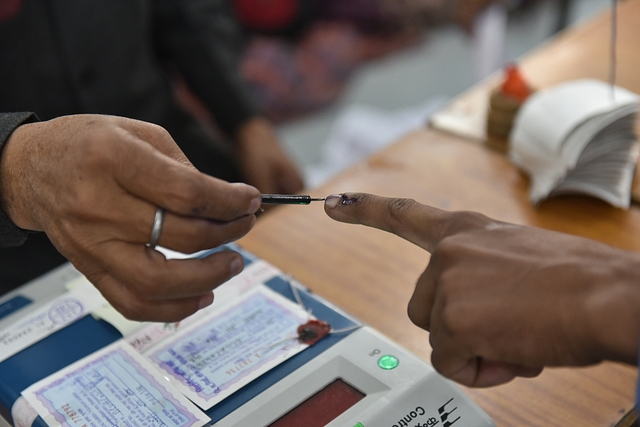
10 Things That Make The 2019 General Elections Different From 2014
Why the 2019 general elections are different from that of 2014.
The Election Commission’s announcement of poll dates for the 17th Lok Sabha and four state assemblies has many unique features.
You can also read this article in Hindi- 10 बातें जो 2014 के चुनावों से 2019 के चुनावों को भिन्न बनाती हैं
One is the reduction in the number of phases from nine in 2014 to seven this time, but without a matching reduction in the length of the exercise. In 2014, the first phase of polling began on 7 April and counting happened on 16 May — a gap of 40 days from start to finish. This time, despite a reduction in the number of phases, the time lag between the first phase of polling (11 April) and counting day (23 May) is a longish 43 days. One wonders why this could not have been shortened. A month-and-a-half is simply too long for any democratic exercise.
The second big change is the number of phases needed this time to cover some big and sensitive states. In 2014, Uttar Pradesh and Bihar had six phases of polling, while West Bengal and Jammu & Kashmir had five each. This time Uttar Pradesh, Bihar and West Bengal will poll in all seven phases, while J&K remains at five. The elevation of West Bengal from five phases to seven must rank as a big change. The Election Commission is clearly saying that this state warrants this level of attention due to changing political dynamics. The rise of the Bharatiya Janata Party (BJP) and the state’s tendency to resort to local violence clearly have something to do with this dubious elevation of West Bengal.
Third, for the first time ever, one state assembly election will be spread over four phases. The unlucky state is Odisha, which will poll over four phases, on 11, 18, 23, and 29 April. This is largely because the Lok Sabha polls are being split into four phases for the state. In 2014, no state that held assembly elections along with the Lok Sabha needed to vote in more than two phases.
Fourth, one state that ought to have gone in for an assembly election, Jammu & Kashmir, is missing out on the action. This is surprising. If polling for six Lok Sabha seats can take place in five phases, one wonders why this could not have been done for the assembly seats too, since the security deployment would be the same. Quite clearly, the Election Commission’s assessment is that the assembly polls will be more critical, and need more deployment of forces, given the security situation in parts of the state. One cannot rule out the possibility that the Centre would have whispered something in the Commission’s ear to avoid complicating the voting intentions of the population by mixing the two elections. Local sentiment tends to dominate the assembly agenda, while national sentiment will dominate the Lok Sabha polls, especially in Jammu and Ladakh.
Fifth, the sheer scale of the current election exercise is mind-boggling. The total number of voters is 900 million, with 84 million being enrolled for the first time. The total voter base is larger than all countries except China, and the voter addition is larger than all but 16 countries in the world, with Turkey having a smaller population base (82 million) than the number of new voters to the 17th Lok Sabha.
Sixth, this election will probably be fought as much through social and digital media as through public rallies and newspaper and print advertising. Little wonder, the Election Commission is monitoring social media giants like Facebook, Twitter, Google and Instagram and asking them to keep an eye on the content pumped through their platforms. A candidate cannot spend on social media and hope that this expenditure will escape the spending limits for her constituency.
Seventh, given the regular carping over electronic voting machines, this time the Commission is putting VVPATs (voter verifiable paper audit trails) in all voting booths. Hopefully, losers will be less inclined to complain after the 2019 results are out.
Eighth, for the first time ever, candidates will not only have to mention their criminal records in their poll affidavits, but also in newspapers and local media. This is historic. Consider the impact of several thousand candidates declaring to the voter, “Hey, I am charged with XXX crime”. Of course, no one will notice if these advertisements of criminality are given in small type in local newspapers. But a big change, nevertheless.
Ninth, citizen reporting has been opened up through a C-Vigil mobile app that will allow anyone to post a photo or video of illegal activities in his neighbourhood. The Election Commission has promised to send in flying squads in minutes. But it should be cautious. There is no guarantee that it will not be inundated with fake calls to keep its flying squads busy while the real crookery happens elsewhere.
Last, given the nature of the contest shaping up this time with the BJP-led alliance facing national and regional parties – it is more than likely that 2019 will top the 2014 voter turnout of 66.4 per cent.